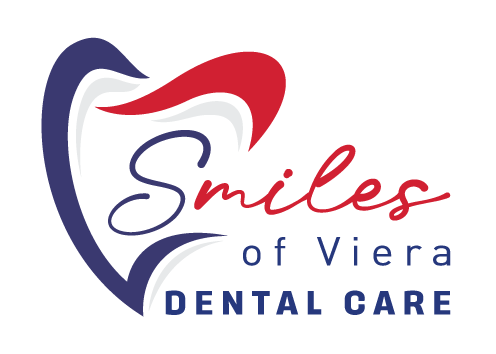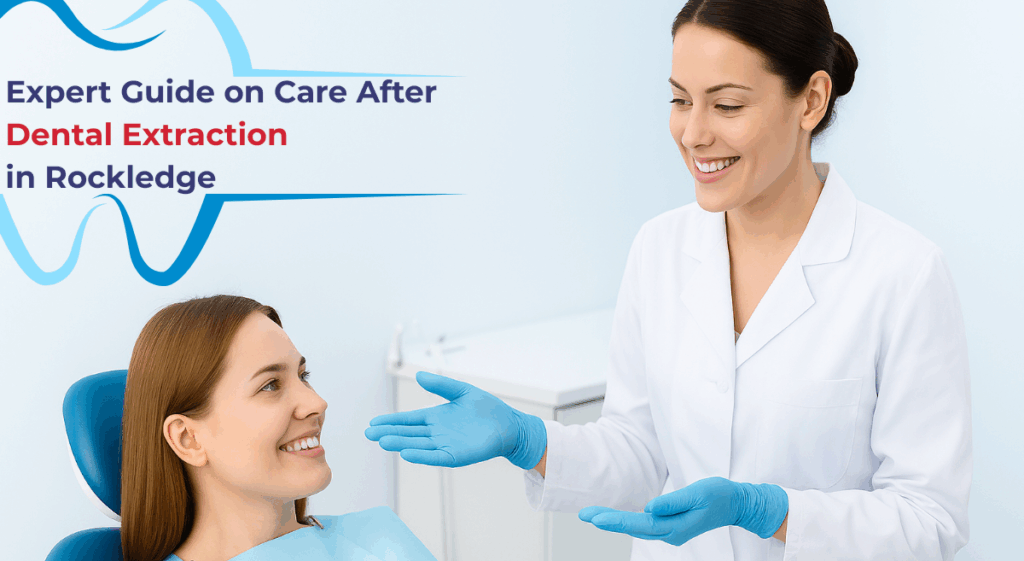- August 20, 2025
- By: Admin@@SMiles0fviEr@
- No Comments
Expert Guide on Care After Dental Extraction | Smiles of Viera
Care after dental extraction is a critical part of ensuring a smooth, speedy recovery and preventing complications after a tooth removal. Whether the procedure was simple or surgical, proper post-extraction care supports healing, minimizes pain, and protects against infection. The impact that the removal of a tooth has on the mouth is highly on the minds of many patients who seek to know how to maintain the mouth after a dental extraction.
This article addresses all the necessary post-extraction care, including pain management, nutritional and hygienic advice, to help one recover efficiently and maintain a confident and healthy smile following extraction.
Care After Dental Extraction: Steps for a Smooth Recovery
Dental extraction is a commonly used procedure to treat causes such as tooth decay, infection, crowding, or the establishment of orthodontic treatment. Irrespective of the cause, how you take care of your mouth after the removal seasonally affects healing. Post extraction in these cases, needed to reduce the incidence of dry socket, infection, or associated pain, which may be long-term, and it also aids in faster regrowth of tissues.
What to Expect Immediately After Dental Extraction
As soon as a tooth is extracted, your body begins the healing process. In order to shield the underlying tooth and nerve tissue, a blood clot forms over the empty socket, starting the healing process. This clot must be maintained. Early removal may lead to dry socket or exposure of the bone and nerve.
A few hours of bleeding are likely to occur. The swelling and mild discomfort could also be typical, and the symptoms may reach their maximum within 48 hours. These symptoms can be handled with medication prescribed by your dentist or over-the-counter pain medication.
Key Care Tips in the First 24 Hours
Control Bleeding with Gauze
Your dentist will apply a gauze pad to the removal area, where you will bite down on it with light pressure. This must be repeated every 30- 45 minutes or as premised until there is no more bleeding. Do not rinse or spit because the clot can come out.
Reduce Swelling with Ice Packs
Apply a cold compress or ice pack to the cheek closest to the removal site. Minimize swelling and dull pain by using 15 minutes of hot and 15 minutes of cold drills on the first day.
Take Prescribed Medications
As indicated, taking painkillers or antibiotics is recommended. Just simple painkillers like ibuprofen help and swelling.
Rest and Elevate
Avoid hard exercise. Swelling and bleeding should be reduced by keeping your head high with pillows when resting.
Avoid Smoking and Alcohol
In addition to hindering the healing process, alcohol and tobacco use increase the risk of infection or dry socket. Avoid them for at least 72 hours in between removals.
Food and Drink Recommendations
Care after dental extraction is greatly aided by diet. The first few days:
- Soft, cooled, or lukewarm: A yoghurt, scrambled eggs, mashed potatoes, soups, smoothies, etc.
- Stay away from hot drinks, spicy and hard or difficult to chew food that can irritate the area or impede the blood clot.
- Take lots of water, but do not use straws because the suction may lift any healing tissue.
- Start reintroducing normal foods gradually with comfort (often 3-4 days).
Oral Hygiene Practices
To avoid any infection, you ought to continue with your oral hygiene, but be gentle on the area of removal:
- The first 24 hours should not include brushing of the removal region.
- Starting the day after the removal, rinse your mouth gently with warm saltwater (1/2 teaspoon salt in 8 ounces of water) after meals and before bed to keep the area clean.
- Continue brushing and flossing on other sites, but watch out that you do not strip the healing gum.
- Take the recommendation of your dentist concerning reverting to your customary dental health routine.
Signs of Possible Complications
Most dental extractions heal up normally, but look out for symptoms that indicate complications:
- A moderate or continuing pain that gets worse following the initial few days.
- Profuse bleeding that absorbs gauze repeatedly.
- Swelling which becomes more prominent after 3 days.
- Taste or smell of the removal site that is foul and may show evidence of infection.
- Painful opening up the mouth, swallowing, or fever.
When you have any of these, consult with your dentist so it can be examined and treated.
Tips for Faster Healing and Comfort
- Drink plenty of water to aid in the healing of tissue.
- Eat foods with high vitamin A and C and zinc as a mineral because they can help in healing.
- Take all post-op guidelines carefully.
- Apply over-the-counter oral gels or topical treatments suggested by your dentist.
- Avoid using your tongue or finger to contact the removal region.
Long-Term Care After Dental Extraction
Normally, a complete healing requires one to two weeks, though the gum tissue might require extra time until it matures. Your dentist may require you to take future visits to evaluate your healing process and the restoration options for your lost teeth, where he may suggest dental implants, dental bridges, or dentures based on your dental condition.
Wisdom teeth extraction or any removal involving the removal of multiple teeth may take more time to recover, and the instructions that may be given will be more detailed.
Conclusion: Prioritize Proper Care After Dental Extraction
For a quick and easy recovery after tooth extraction, proper post-recovery care is essential. Controlling the bleeding, pain, and swelling, eating the appropriate foodstuffs, and indulging in some gentle oral care, you safeguard healing and minimize the chances of complications. Avoid doing anything that can loosen the scope of the blood clot, and monitor changes of any abnormal signs and symptoms.
At Smiles of Viera, our patient education and assistance are our focus areas that will allow you to recover safely and comfortably. Adhering to these rules, you are guaranteed not only a fast recovery but also a smile, which is healthy and confident in the long term.

